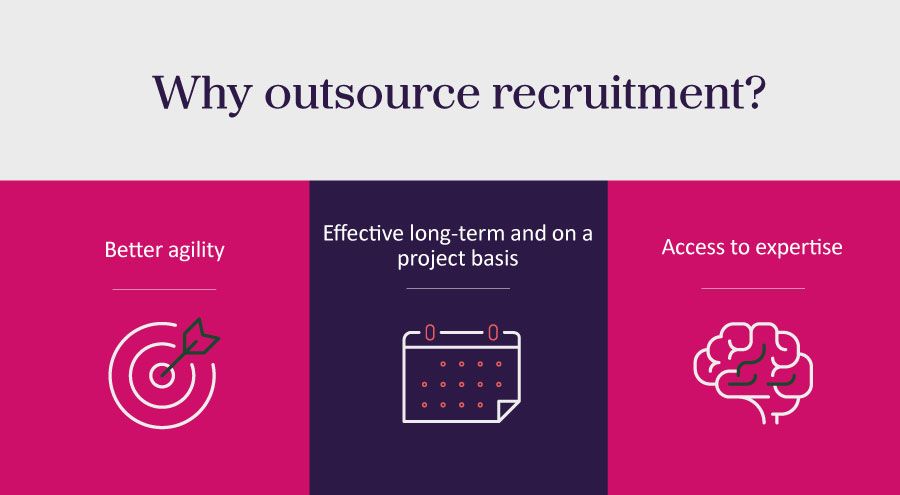The untapped advantage: the business case for hiring workers aged 50+
Contributors:
Andy Simpson
Commercial director, 55/Redefined
Paul Modley
Managing director of DEIB, AMS
Rebecca Wettemann
CEO of HR technology market analyst, Valoir


Growing your business and managing people risk could come from an often-overlooked source: employees over the age of 50. Is your TA team ignoring these potential candidates and downplaying the reality of sinking birth rates?
Today’s employers are staring down the barrel of an endless array of challenges: the threat of global tariffs amidst a cooling economy, mass IT layoffs, uncertainty over disruptive technological advances such as AI, and the political backlash against DEI. If that weren’t enough, another threat that has been looming for years is becoming a stark reality: Nearly every nation is seeing declining birthrates that will result in a rapidly ageing workforce.
The stark reality is that sub-Saharan Africa is the only region in the world where birth rates are rising at a pace sufficient to replace aging generations. By 2027, 49% of the global workforce will be over 50 and governments are desperate to have families grow their broods. The current U.S. president proposed a $5,000 tax break for new mothers while Hungary has promised new mothers a lifetime of paying no taxes. South Korea has spent more than 270 billion GBP on childcare subsidies, which means that new parents now receive a cash payment upon the birth of a child.
The reality of an ageing workforce is already apparent in the American workplace. According to the U.S. Bureau of Labor Statistics, employment of workers aged 65 or older has grown by 117% within the past 20 years and employment of individuals 75 years or older has also increased by 117%. Meanwhile across the Atlantic, leading U.K. pharmaceutical retail chain Boots (a Walmart company) boasts six generations among its ranks, ranging in age from 16 to 80. Hard to believe that the first wave of Millennials will turn 50 within six years.
World leaders are taking note. The World Economic Forum has recognized an ageing population as a global mega trend alongside AI and climate warming.
One would think that employers would be fighting tooth and nail to attract and retain vital skills and experience that this demographic represents but this has not been the case. Andy Simpson, commercial director of 55/Redefined, the only global organization focusing on the commercial benefits of an ageing population, has shared with us their research that suggests, 33% of recruiters will typically not put forward a candidate over 50 years of age, and 37% of employers cite “health and illness” as a barrier to recruiting midlife workers while one in five cite “lack of energy.”
Furthermore, one-third of U.K. 50 to 69 year-olds have been told they were unlikely to get a job due to having — wait for it — too much experience. This could be why only 18% of over-50s have been contacted by a recruiter in the last year.
This bias, unconscious or otherwise, is often based on stereotypical myths, including the belief that older workers are set in their ways, expect a high salary for their decades of experience, and are resistant to change — 55/Redefined’s research suggests a very different story, including the insight that 83% of over-50 workers would take a pay cut to do a role they felt was more purposeful and progressive inside their existing company or with a new employer.
A costly blind spot
Even as complex machine learning tools enter the recruitment, interview and hiring process, decisions about job offers often rest on assumptions that overlook the realities — and the promise — of today’s mature workforce. Simpson points out that organizations may be unconsciously ignoring a critical resource.
“Companies would be aghast if they learned that they were willingly turning their back on half of their consumers yet they are quite possibly turning their back on 40 percent of the talent pool.” he says.
“We need to rethink our workforce strategies and understand that the old model of education, work, retire all by the age of 60 is outdated and no longer viable,” he adds. “We have for the first time four life stages and those aged 55 to 75 have a desire and a sense of purpose beyond that of their parents and grandparents.”
This new stage of life will see individuals wanting and/or needing to work well into their 60s and 70’s, Simpson argues. Organizations that recognize this will preserve vital skills and experience by designing clear career paths and eliminating the career cliffs that have long defined how large companies approach the motivations of employees over 50.
This phenomenon is not going away, according to Simpson. “A child born in the U.S. today has a one in two chance of living to 104,” he says.
“Every business needs to make sure that their recruiters are not biased when it comes to age”, says Paul Modley, managing director of DEIB at AMS. “We know that there is still bias around age, but the reality is, the aging workforce and the reducing birth rate globally can provide opportunity for growth to a business’ bottom line,” he says.
Besides the positive effect on reducing attrition costs (employ an older worker and they are 5x more likely to stay in role in the first 18 months), mature employees are 200% less likely to have a day off sick. Hiring mature workers enables an enterprise to retain employees with valuable institutional knowledge, preserving expertise within the organization.
“That retention of key skills can be solved by having a different lens on your over-50s workforce. This whole practice about ageless, almost blind hiring and talent development strategies will have to come into play,” says Simpson.
Retaining older workers can also improve an employer’s reputation and mitigate litigation down the road. Simpson says that in the U.K., for example, more than 90 percent of tribunal claims against an employer for age discrimination don’t make it to court, and they often settle for $180,000 to $200,000.
“The risk now is that an employee will turn around and sue you for discrimination,” warns Simpson.

The skills race isn’t just for the young
With the rise of new technologies, evolving business practices, and social change, mature workers have witnessed firsthand the transformation of skills—from an era when competencies were listed at the bottom of résumés and CVs to today, where they take precedence over job experience and education. That said, the notion that older workers are resistant to change and training persists. Simpson believes that this is more perception than reality, and adds that more over-55s are eager to transition into new roles and responsibilities with an awareness of the new skills which are required provided they are given the opportunity to learn and grow.
“Employers often feel that older workers don’t want to progress in their careers. In reality, they’re quite prepared to go and do something new, unique and challenging provided they have the opportunity to continue work,” he says.
“Older workers are better at being open to training for new technologies or ways of working”, adds Modley. “That is a bit of a smoke screen that some recruiters or hiring managers will use,” he says. TA leaders need to rethink what it means to retain older workers in the workforce, and this can start with scheduling work hours. Modley says that this class of workers may not be interested in working nine hours a day for five days year-round.
“They may want to work nine to five for nine months a year but for those nine months, they’re going to be so engaged and focused that they will deliver amazing work,” he says, adding that this requires TA leaders to think differently about how to hold onto those workers. “They may wish, for example, to work three days a week, but they will give so much more in those three days, and your business will be able to hold onto their skills and experience that may not be available from younger workers,” he says.

The mentor surplus
Hiring older, more experienced workers will have a profound impact on mentoring, even if the older workers require upskilling themselves.
“How do you get all of those generations working together effectively, particularly when you’ve got younger leaders and managers? How do they get the best out of the different generations and engage with somebody potentially in their sixties?” asks Modley. He adds that younger workers will also need help adapting to an older workforce when their experience with older people might be elderly members of their family.
“There are opportunities for every different generation in terms of mentoring. Wouldn’t it be great for somebody coming out of college to mentor somebody in their sixties and the other way around?” he adds. “I think every generations got something to learn from each other in terms of what makes them tick, how they think and reason, and how they best communicate in the office.”
“Mature workers often have skill sets that younger ones don’t and can be valuable as mentors and coaches”, says Rebecca Wettemann, CEO of HR technology market analyst of Valoir.
“They also have experience working in times of economic downturn — which can be particularly valuable given today’s economic uncertainty. Talent leaders should recognize, also, that more mature employees have organizational knowledge that also leaves when they walk out the door,”
“As we think about automation and AI, those that know existing processes that may not be documented can be invaluable in codifying those processes to enable intelligent automation, and likely also have insights on where existing processes could be improved to really leverage AI,” says Wettemann.
This integration of training and collaboration can help mitigate risk in a complex business world. And for Modley, this means taking advantage of a multigenerational workforce and getting the best out of each generation, whether it’s a large-scale project or simply day-to-day working.
“When you combine the experience of older workers with the creativity of younger ones—recognizing that creativity isn’t limited by age—each generation brings unique strengths to the table,” “If you are writing off the older workers, you’re losing all that experience, insight, and real focus of managing risk.”
“But if a firm is potentially using those skills and wrapping it all up into multi-generational working, they’re getting the best out of everybody while managing risk”, says Modley.
Simpson agrees. “If you don’t have an age strategy, you don’t have a growth strategy,” he says.
And this mentoring role can light a fire inside the bellies of mature workers, who often are seeking a sense of purpose as well as a paycheck and employee benefits.
“A lot of people enjoy working, and as we’re entering this hundred-year lifecycle, people don’t wish to stop working when they get to 55, 60, or 65 because they may have another 20 or 30 years of good, healthy living left,” says Modley. “They just want to do good work.”
A workforce strategy for the future
The evidence is clear: hiring and retaining workers aged 55 and older is not an act of charity—it’s a strategic imperative. This class of employees in senior or mid-level positions has the potential to bring deep experience, stability, mentoring, and a willingness to contribute in new and flexible ways.
For companies and their TA teams who value resilience, institutional knowledge, and diversity of thought, tapping into this underutilized talent pool offers almost endless competitive advantage. And it will have global implications provided TA leaders act now.
“If countries are going to maintain their ability to create GDP, they have to do something about their aging workforce, says Simpson. “And the same goes for businesses.”
written by Phil Albinus in partnership with the Catalyst Editorial Board
with contribution from:

Andy Simpson
Commercial director, 55/Redefined
Paul Modley
Managing director of DEIB, AMS
Rebecca Wettemann
CEO of HR technology market analyst, Valoir




















































































